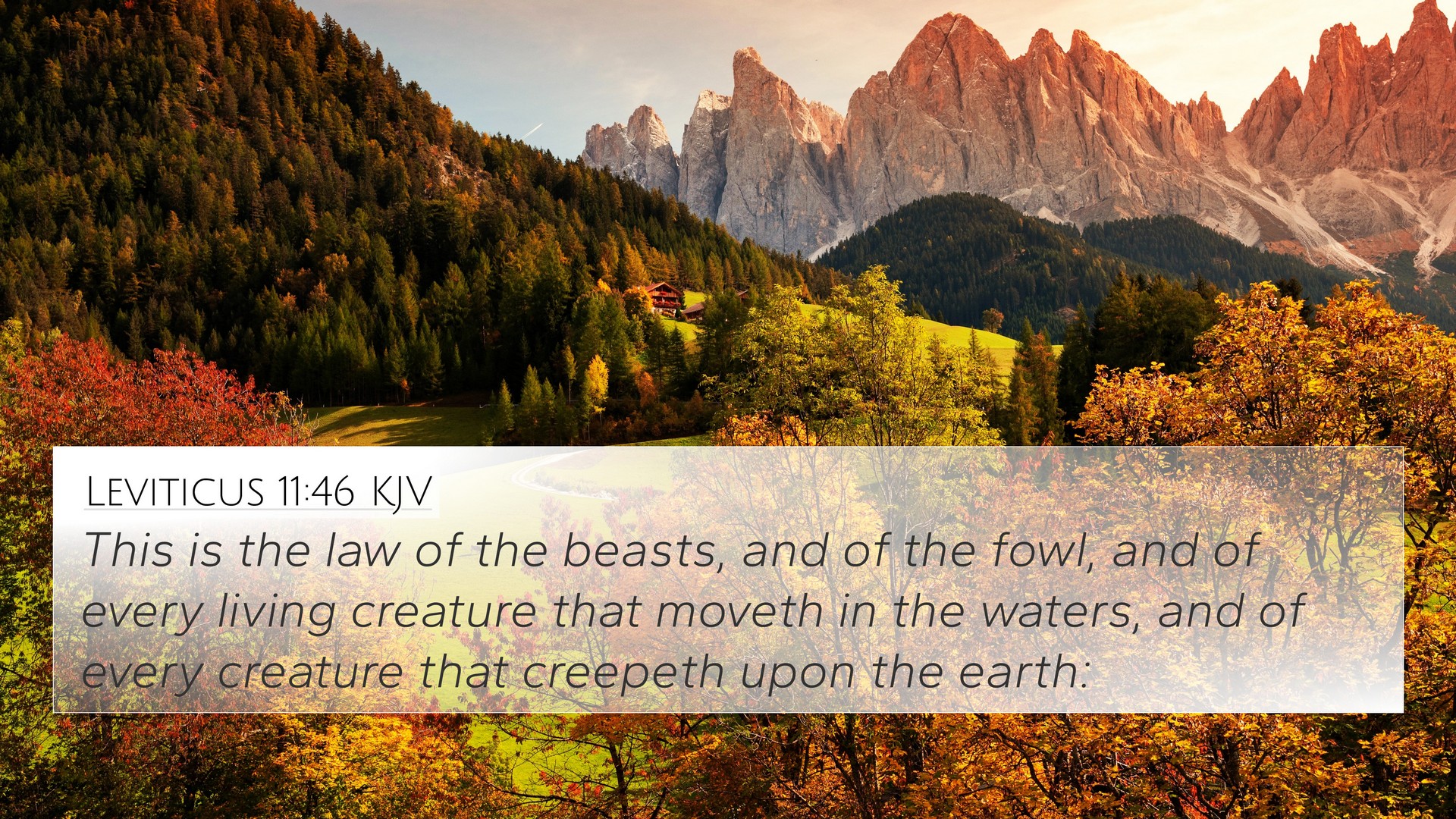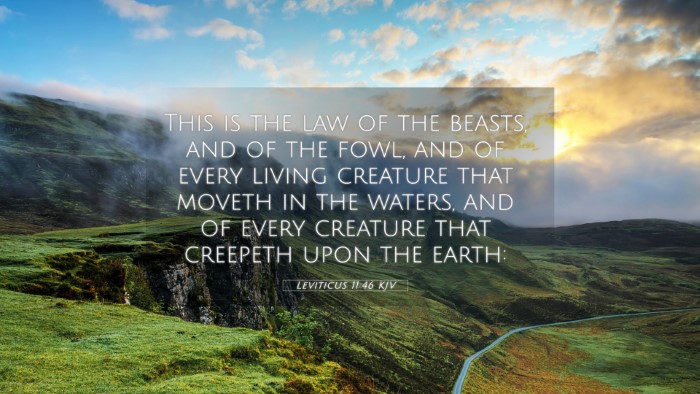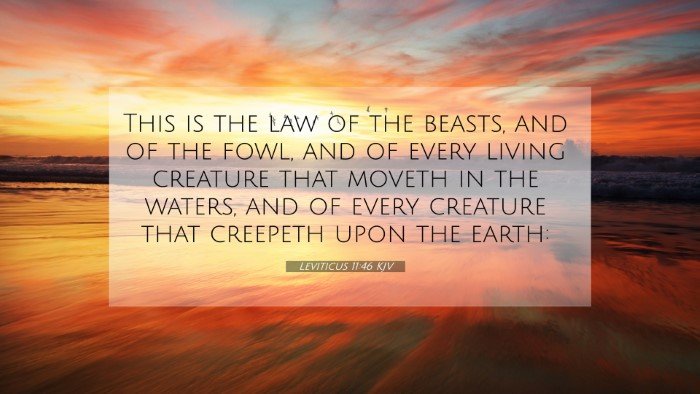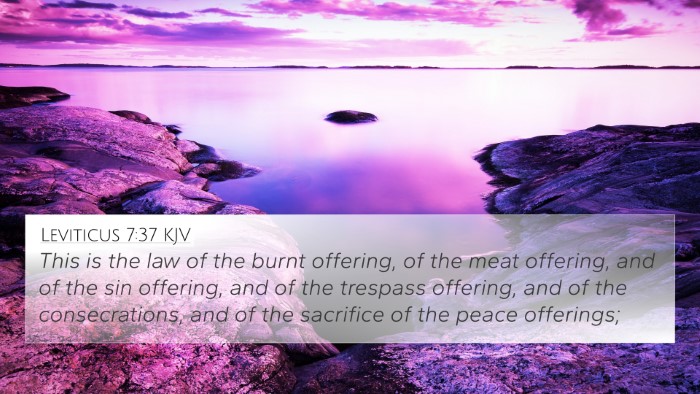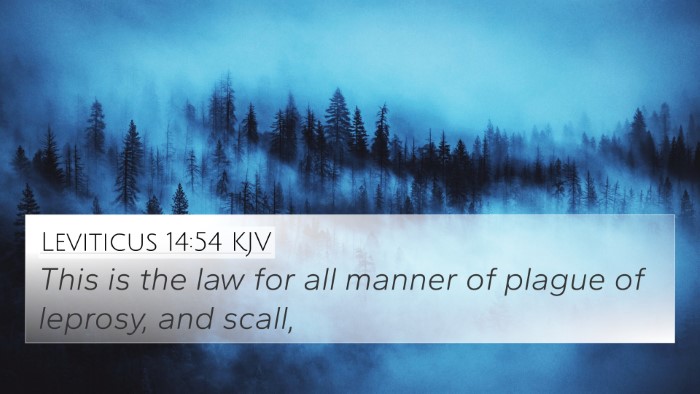Understanding Leviticus 11:46
Verse: Leviticus 11:46 - "This is the law of the beasts, and of the fowl, and of every living creature that moveth in the waters, and of every creature that creepeth upon the earth."
Overview of Leviticus 11:46
Leviticus 11:46 presents a divine ordinance regarding clean and unclean animals, forming part of the larger narrative of holiness laws given to the Israelites. It underscores how adherents must discern between sacred and profane, which reflects God’s intent for His people to remain pure and set apart.
Commentary Insights
-
Matthew Henry's Commentary
Matthew Henry emphasizes that this verse serves as a summary of the regulations laid out regarding dietary laws for the Israelites. These instructions were not arbitrary but were meant to guide God’s people towards holiness and separation from impurity.
-
Albert Barnes's Notes
Barnes explains that these laws were intended to instruct the Israelites on the appropriateness of certain animals. Such regulations symbolized spiritual reality, highlighting the importance of obeying divine commands to maintain communal and individual purity.
-
Adam Clarke's Commentary
Clarke reflects on the ceremonial significance of these laws, proposing they were linked to spiritual symbolism, portraying deeper truths about separation from sin and impurity, showcasing God’s desire for His people to embody holiness.
Thematic Connections
The theme of purity is prevalent throughout Scripture. Leviticus 11:46 connects with numerous other verses that further elucidate God's standards for holiness. Below are key Bible cross-references:
- Deuteronomy 14:3-21: Further elaborates on clean and unclean animals, providing a comprehensive list.
- Isaiah 66:17: Discusses the consequences of eating unclean animals, illustrating God's emphasis on purity.
- 1 Peter 1:16: "Be holy, because I am holy" - reiterates the call to holiness directly linked to spiritual reality.
- Acts 10:14-15: Peter’s vision challenges traditional dietary restrictions, exemplifying shifting understanding in the New Covenant.
- Romans 14:14: Further guidance on dietary practices in light of New Testament freedom and conscience.
- Mark 7:19: Jesus teaches that it is not what enters a man that defiles him but what comes from within, emphasizing heart purity.
- Hebrews 9:13-14: Draws a distinction between the blood of animals and the cleansing through Christ's sacrifice, reflecting the transition from the old laws to the new.
Cross-Referencing Biblical Texts
Engaging in a comprehensive study through cross-referencing allows for deeper insights into Scripture. The linking of biblical texts enhances understanding of God's expectations.
Tools for Bible Cross-Referencing
Utilizing tools such as a Bible concordance or a Bible cross-reference guide can facilitate in identifying connections between verses effectively. These resources can aid in a cross-reference Bible study that enriches comprehension of related themes.
How to Utilize Bible Cross-References
Understanding how to effectively utilize cross-references can deepen your biblical study. By exploring links between verses, believers can experience a greater grasp of God’s narrative throughout the Bible.
Conclusion
In conclusion, Leviticus 11:46 encapsulates essential truths about God’s laws concerning dietary practices, serving not only as historical regulations for the Israelites but as enduring principles reflective of divine holiness. Engaging with cross-references and exploring thematic connections can significantly enhance one’s understanding of the Scriptures as a cohesive narrative revealing God’s heart and intentions for humanity.
